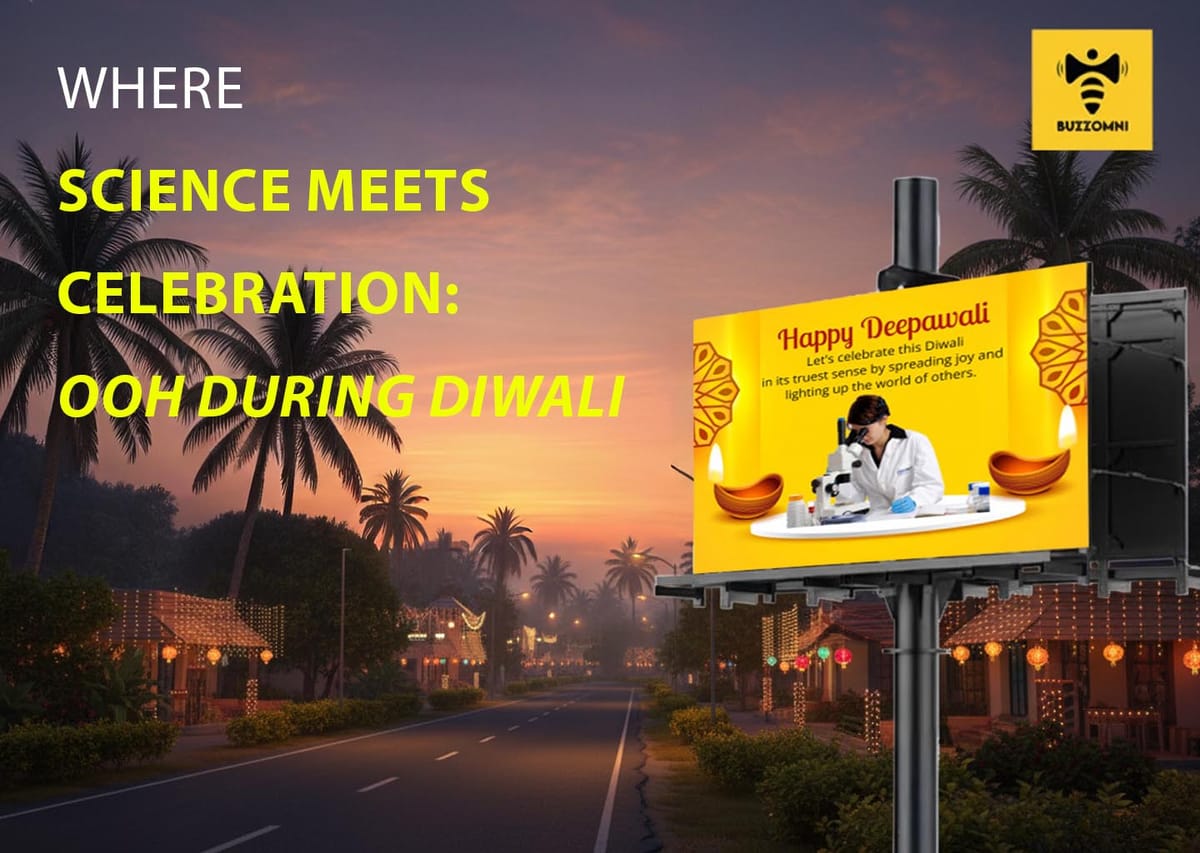The Science of Festive Attention: Why Outdoor Media Stands Out During Diwali
During Diwali, streets are full of sights and sounds competing for attention. Discover how outdoor ads cut through the noise by tapping into the brain’s focus, emotions, and context, making messages more noticeable and memorable.

Table of Contents
- Introduction
- How Our Brain Notices Things
- Connecting with Emotions
- Location Matters
- Why Outdoor Ads Work Better
- Conclusion
Introduction
Diwali is India’s festival of lights, full of colors, sounds, and excitement. Streets are decorated, markets are busy, and everything seems to compete for our attention. For brands, this is a big opportunity but also a challenge—how do you make people notice your message when there’s so much happening? This is where the science of attention meets outdoor advertising.
How Our Brain Notices Things
Our brain can only focus on a limited amount of information at a time. During Diwali, the streets are full of lights, decorations, and ads, which makes it harder for any single message to stand out.
Neuroscience shows that our brains notice things that are bright, moving, or emotionally interesting. Outdoor ads—like billboards or cab wraps—use these ideas. A colorful billboard or a creatively wrapped cab catches attention because it looks different from everything else around it. This is called the “pop-out effect,” where certain things instantly grab our eyes.
Connecting with Emotions
People are in a happy and festive mood during Diwali. Research shows that ads that match how people are feeling get remembered better.
Outdoor ads that use Diwali colors, lamps, or Rangoli patterns don’t just show a product—they remind people of the festival itself. This emotional connection helps people notice the ad, remember it, and even feel positively about the brand.
Location Matters
Where an ad is placed also affects how well people notice it. Ads on busy streets, near markets, or along common travel routes get seen more often. Seeing the same ad multiple times makes it easier to remember, a concept called the “mere exposure effect.”
During Diwali, placing ads where people naturally go—like shopping areas or streets with heavy traffic—helps brands become part of the festive experience. The brain links the happy feelings of the festival with the ad, making it more memorable.
Why Outdoor Ads Work Better
Unlike digital ads that people can scroll past, outdoor ads are impossible to ignore. Their size, location, and creativity help them stand out.
During a festival, bright visuals, motion, and culturally familiar elements make outdoor ads even more effective. They grab attention, connect emotionally, and stay in people’s memory longer.
Conclusion
Diwali is full of sights and sounds that compete for attention. By understanding how people notice things, what catches their eye, and how emotions affect memory, brands can use outdoor advertising to stand out. Companies like BuzzOmni use these insights to create ads that people see, enjoy, and remember during the festival.



